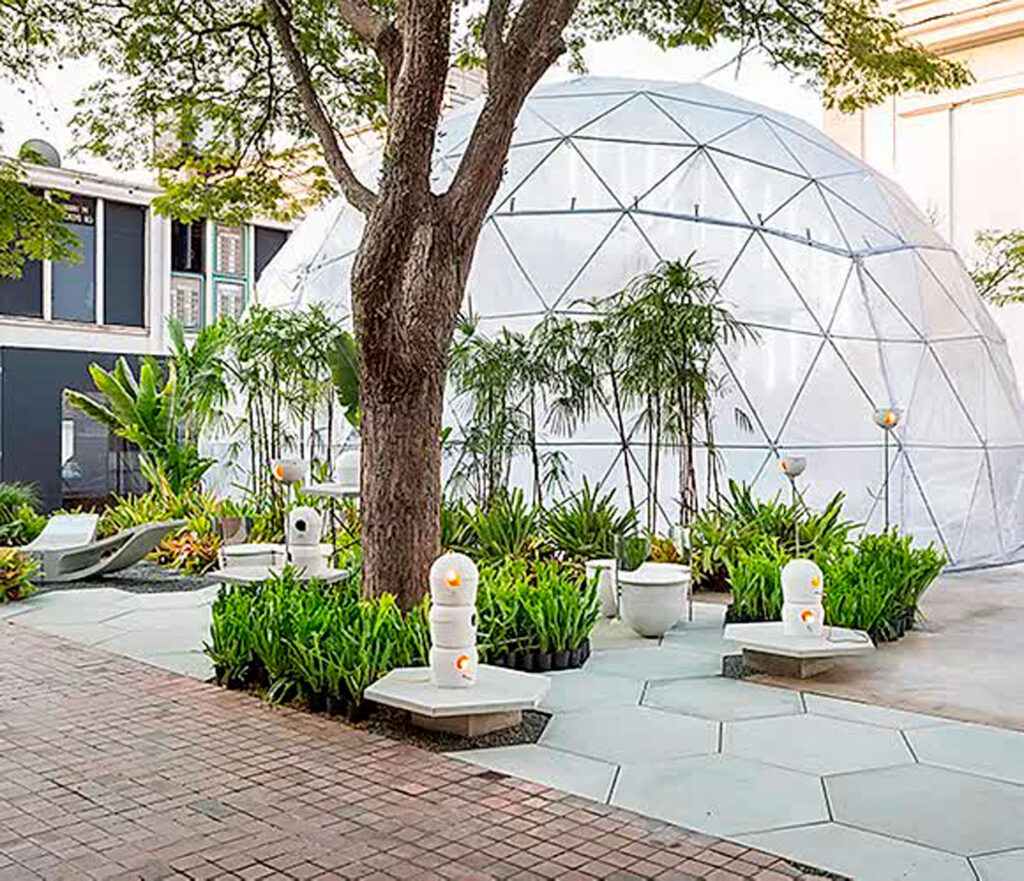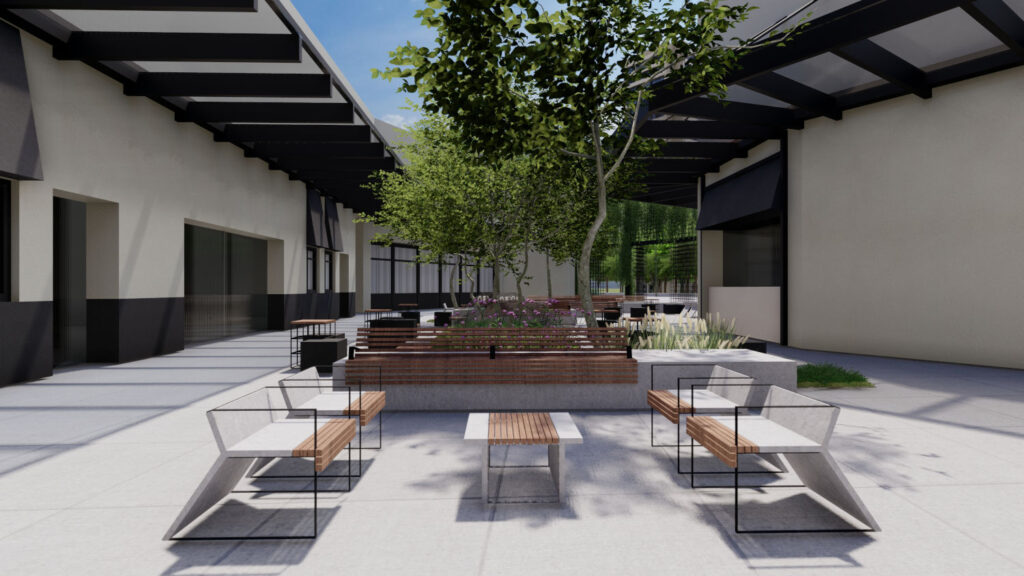Capable of reconciling beauty, elegance and, at the same time, simplicity and functionality to constructions and interiors, minimalist architecture is increasingly highlighted in the world. Known for the integration between environments, rejecting complex designs and textures, it is an updated and sophisticated concept of architecture. Understand more!
What is minimalist architecture?
The minimalist movement emerged in the 20th century, from artistic and cultural concepts characterized by the use of simplified fundamental elements. From there came the design and even the minimalist lifestyle, whose main influence was the elimination of excesses in architectural works. Considered the master of minimalism, the German architect Ludwig Mies Van der Rohe nailed it: less is more.
Como a arquitetura minimalista surgiu?
A arquitetura minimalista surgiu como uma resposta ao excesso de ornamentação e complexidade presente nas tendências arquitetônicas anteriores, como o barroco ou o modernismo.
Sua origem está vinculada aos movimentos artísticos e culturais do século XX, especialmente nas décadas de 1950 e 1960, quando houve uma busca por simplicidade, funcionalidade e clareza estética.
O minimalismo reflete uma filosofia que valoriza o essencial e busca eliminar o supérfluo, com ênfase na pureza das formas e nos materiais.
Como aplicar a arquitetura minimalista na prática?
Para aplicar a arquitetura minimalista na prática, é importante seguir alguns princípios que definem o estilo, como:
- Simplicidade e funcionalidade: Elimine detalhes e elementos decorativos desnecessários. Cada espaço deve ter uma função clara, sem excessos
- Uso de materiais naturais e de alta qualidade: Materiais como concreto, madeira, vidro e aço são frequentemente usados para criar uma sensação de harmonia e equilíbrio. A qualidade dos materiais é mais importante do que a quantidade.
- Linhas limpas e formas geométricas: Aposte em formas simples e retas, evitando curvas ou ornamentações excessivas. A arquitetura minimalista valoriza a pureza das formas.
- Espaços abertos e iluminação natural: Os ambientes minimalistas costumam ser amplos e abertos, com uma forte conexão entre o interior e o exterior. Janelas grandes e espaços sem divisões exageradas ajudam a maximizar a luz natural.
- Cores neutras e paleta de tons suaves: Utilize cores neutras como branco, preto, cinza e tons terrosos. Isso cria um ambiente calmo, sereno e sem distrações.
- Integração com a natureza: A presença de elementos naturais, como jardins internos ou a integração com o ambiente ao redor, é uma característica importante na arquitetura minimalista.
- Menos é mais: Este princípio fundamental do minimalismo se aplica a todos os aspectos do design. O foco está na eliminação do desnecessário e no aproveitamento eficiente do espaço e dos recursos.
Ao adotar esses princípios, é possível criar um ambiente minimalista que seja funcional, esteticamente agradável e que transmita uma sensação de paz e tranquilidade.
Main features of minimalist architecture
When it comes to excluding complex and exaggerated elements, minimalist art stands out for its clean lines, shapes, textures and exuberant tones. It is worth, here, the use of light and neutral colors, geometric shapes and simple materials, such as wood and MDF, a kind of medium density fiber.
Among the best-known and most used concepts, minimalist constructions can feature spacious facades, with bricks in their natural state on the walls, burnt cement floors, the enhancement of natural lighting (through railings and glass windows, for example) and the integration of environments from the extinction of walls and partitions.
Having said all that, the following stand out as the main characteristics of minimalist architecture:
- Natural lighting;
- Simplicity;
- Functionalism;
- Simple geometric shapes;
- Neutral or primary colors;
- Clean structures;
- Little ornamentation;
- Innovation in the use of materials;
- Purism.
Vantagens da arquitetura minimalista para casas e ambientes modernos
Adotar a arquitetura minimalista em projetos residenciais e comerciais modernos vai muito além de uma questão estética — trata-se também de funcionalidade, bem-estar e eficiência. A seguir, confira as principais vantagens desse estilo arquitetônico que conquista cada vez mais espaço nas construções contemporâneas:
- Ambientes mais organizados e tranquilos
Com menos objetos, divisórias e elementos decorativos, os espaços minimalistas promovem uma sensação de ordem e serenidade. Isso contribui para um dia a dia mais leve e produtivo, especialmente em ambientes de trabalho ou descanso.
- Valorização da iluminação natural
O estilo prioriza grandes aberturas, janelas amplas e integração com o exterior, o que aumenta o uso da luz natural, reduzindo o consumo de energia elétrica e tornando os ambientes mais agradáveis.
- Economia e otimização de recursos
Ao eliminar o excesso de materiais e detalhes decorativos, o minimalismo pode gerar economia durante a construção e facilitar a manutenção do imóvel no longo prazo. Além disso, foca na qualidade dos materiais, o que aumenta a durabilidade.
- Integração entre espaços
A arquitetura minimalista favorece a criação de ambientes integrados, o que amplia a sensação de espaço, facilita a circulação e promove maior conexão entre as pessoas nos ambientes.
- Estilo atemporal e elegante
O minimalismo não segue modismos. Suas linhas limpas, cores neutras e materiais naturais criam um visual sofisticado e duradouro, que permanece atual mesmo com o passar dos anos.
- Sustentabilidade e consciência ambiental
Ao evitar excessos e priorizar materiais duráveis e naturais, o estilo minimalista se alinha a práticas sustentáveis. Além disso, a simplicidade construtiva reduz o desperdício de recursos.
Em resumo, a arquitetura minimalista transforma casas e ambientes modernos em espaços funcionais, elegantes e conscientes, promovendo uma verdadeira conexão entre o ser humano, o espaço e a natureza.
Main works of minimalist architecture
Inspired by cubism, minimalist architecture emerged in the 1950s in New York City, United States, becoming a kind of counterculture in the face of North American consumerism. Among the main names that used the concept in their constructions are Gerrit Rietveld, Ludwig Mies van der Rohe, Bauhaus, Tadao Ando, Oscar Niemeyer, among others.
All these architects were responsible for the most famous works in the world, such as the Schröder House (Gerrit Rietveld), the Farnsworth House and the Barcelona Pavilion (both by Ludwig Mies van der Rohe), the Church of Light, 21 21 Design Sight and the University of Monterrey (Tadao Ando).
In Brazil
Responsible for some of the most important works in the country, such as the project for the city of Brasilia, Oscar Niemeyer is the best-known name in Brazilian minimalist architecture. Among its main buildings are the Planalto Palace (Brasília), the Copan Building (São Paulo) and the Pampulha Architectural Complex (Belo Horizonte).
Minimalist and sustainable designs
Para quem deseja elaborar um projeto de minimalist architecture combined with sustainability, Plantar Ideias can help build this dream. Created in 2016, the studio's main objective is to create concepts that promote well-being and contact with nature, prioritizing a more sensitive and refined approach to natural issues and the construction of landscapes.
Check also: O que é mobiliário urbano | Design biofílico





